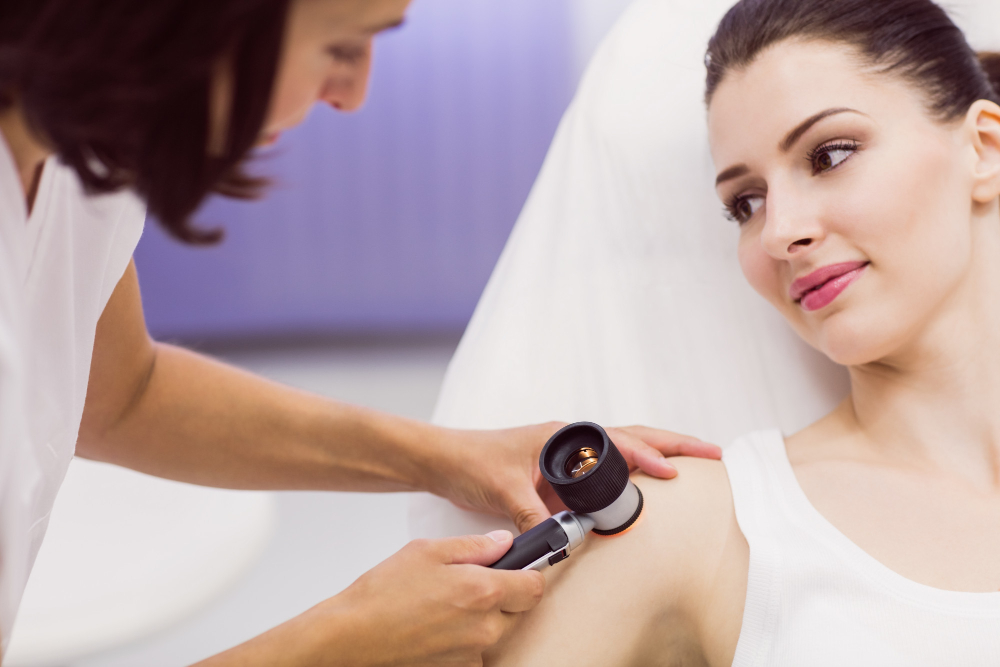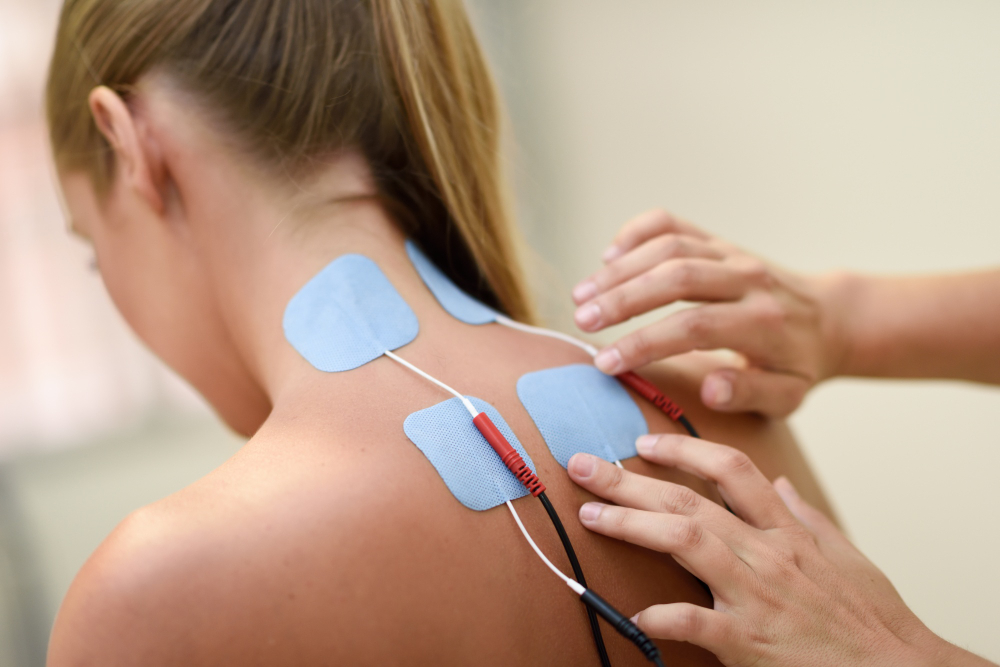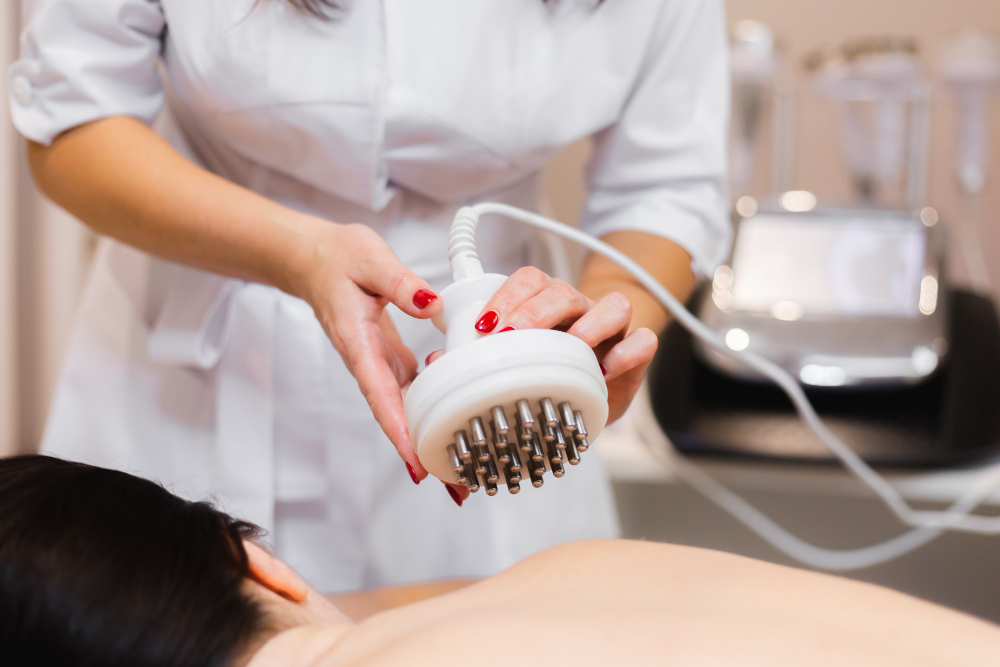Shockwave Therapy

Who Should Avoid Shockwave Therapy?
There are several situations and conditions where shockwave therapy may not be appropriate or safe, despite the fact that it can be helpful for a number of musculoskeletal disorders. Here are some situations where shockwave therapy should typically be avoided:
- Pregnancy: Shockwave therapy is generally not recommended for pregnant women, particularly therapy targeted near the fetus.
- Blood Clotting Disorders or Anticoagulant Medication: Those with blood clotting disorders or people taking anticoagulant medication are generally advised against having shockwave therapy due to the risk of bleeding.
- Malignancies: Shockwave therapy is not recommended for areas with cancer or malignant tumors.
- Infections: Areas with active infections should not be treated with shockwave therapy.
- Growth Plates: In children and adolescents, the areas where new bone growth is occurring (known as growth plates) should not be treated with shockwave therapy.
- Pacemakers: Patients with cardiac pacemakers should avoid this therapy, as the shockwaves could interfere with the device's function.
- Bone Fractures: Areas with bone fractures should not be treated until the fracture has fully healed.
- Nervous Tissue: Care should be taken around nervous tissue, as excessive shockwave treatment can potentially damage these areas.

Below mentioned are some of the main benefits of shockwave therapy:
- Non-Invasive: Being non-invasive, shockwave therapy doesn't require surgery or other procedures that might damage the skin.
- Pain Relief: Shockwave therapy can provide significant pain relief for many patients.
- Promotes Healing: Shockwave therapy can stimulate the body's natural healing processes, encouraging the recovery of injured muscles, tendons, and other tissues.
- No Need for Medication: Patients who can't handle particular drugs or would rather avoid them may find it to be a substantial benefit if the treatment itself doesn't include any medications.
- Outpatient Treatment: Shockwave therapy is typically delivered in a clinic or hospital outpatient setting. This means it doesn't require a hospital stay.
- Quick Treatment & Recovery Time: Each treatment session typically takes only about 15 to 20 minutes.
- Effective for Chronic Conditions: Chronic diseases that have not responded to other therapies may benefit from shockwave therapy.

Shockwave therapy sends acoustic waves into an injured part of the body to stimulate healing. The exact mechanisms are still under investigation, but the current understanding is that it works through several pathways:
- Mechanical Stimulation: The shockwaves generate a force on the tissues, which can stimulate cell membrane activities and improve circulation. The mechanical pressure and tension forces stimulate mechanoreceptors in the tissue which can lead to pain relief and muscle relaxation.
- Increased Blood Flow: Shockwave therapy has been shown to stimulate the formation of new blood vessels in treated areas, improving the supply of nutrients and oxygen to the tissue and promoting more efficient removal of waste products. This enhanced blood flow can accelerate the body's natural healing processes.
- Pain Reduction: The therapy may overstimulate the nerves that communicate pain to the brain, which could lessen the sensation of pain.
- Breaking Down Scar Tissue: Shockwaves may also help to break down scar tissue and calcifications that can occur with chronic injuries.
- Promotion of Tissue Regeneration: Shockwave therapy activates particular biological processes in the body that result in bone, tendon, and other soft tissue repair and regeneration.

Injuries Treated with Shockwave Therapy
The below mentioned are some of the injuries and conditions that are commonly treated with shockwave therapy.
- Plantar Fasciitis: This condition causes pain in the heel. It is often due to inflammation of the plantar fascia, which is a thick band of tissue that connects the heel bone to the toes.
- Tennis Elbow (Lateral Epicondylitis): This is a type of tendinitis that causes pain in the elbow and arm. It's often caused by overuse or repetitive motion.
- Achilles Tendinitis: The back of the leg near the heel hurts from this condition. Overuse or injury to the Achilles tendon is the cause.
- Jumpers Knee (Patellar Tendinitis): It affects the tendon that attaches the kneecap to the shinbone. It's common in sports that involve jumping, such as basketball and volleyball.
- Shoulder Tendinitis & Calcific Tendinitis: Inflammation and, in the case of calcific tendinitis, calcium deposits in the shoulder tendons are features of both disorders.
- Heel Spurs: These are bony protrusions on the underside of the heel bone. They can occur over time due to the stretching of the plantar fascia or the wearing of the heel's protective pad.
- Shin Splints: This term refers to pain along the shin bone (tibia). It's typically caused by exercise, particularly activities that involve repetitive impact, such as running or jumping.
- Stress Fractures: Stress fractures are tiny cracks in a bone that occur over time due to repetitive force, often from overuse — such as repeatedly jumping up and down or running long distances
- Non-healing Ulcers: Chronic and non-healing ulcers can be treated with shockwave therapy to promote healing.
- Certain Soft Tissue Injuries: Shockwave therapy can be used to treat various soft tissue injuries such as muscle or ligament sprains.

Although shockwave therapy is typically seen to be safe, it nevertheless has the potential to cause negative effects like any other form of treatment. However, these are typically minor and temporary. They may include:
- Pain or Discomfort: During and after the procedure, you might experience some pain or discomfort in the treated area. This is generally temporary and should fade within a few days.
- Swelling: Some people may experience swelling in the treated area after a shockwave therapy session.
- Redness: The treated area may become red after the procedure due to increased blood flow.
- Bruising: Although less common, some people may experience bruising in the area where shockwave therapy was administered.
- Skin Damage or Burns: There have been sporadic cases of skin injury or burns brought on by shockwave therapy.
- Temporary Increase in Pain: Some patients may experience a temporary increase in their symptoms following treatment. This is usually short-lived, and symptoms generally improve within 24-48 hours.

